
[ad_1]
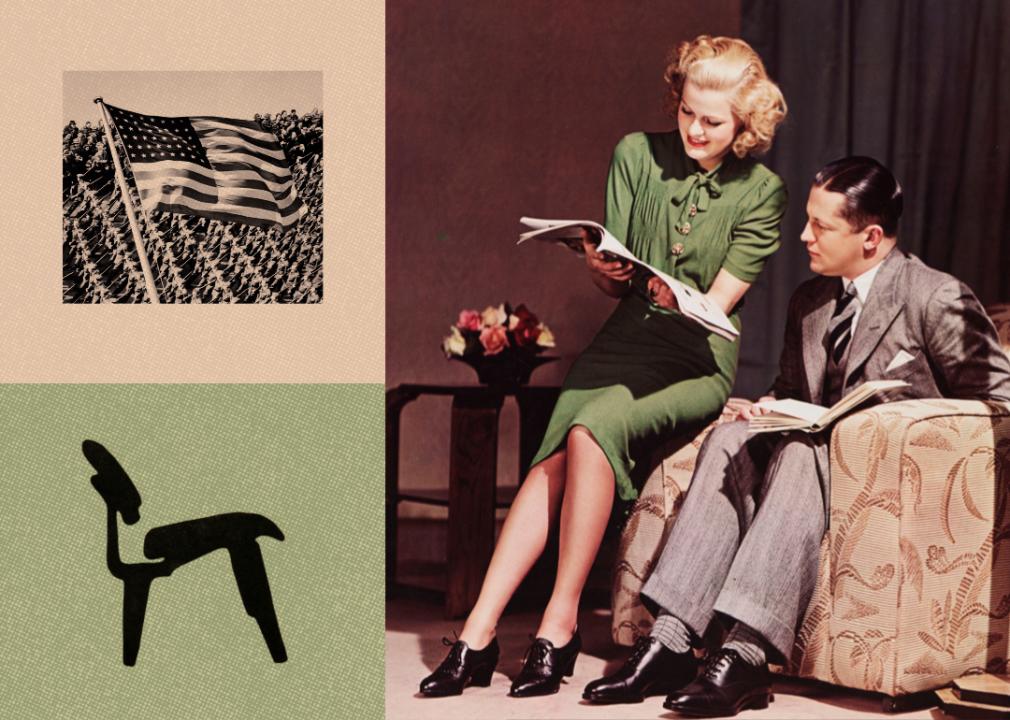
Picture Illustration by Stacker // Getty Photos
Many years of design: How American inside design developments replicate our historical past
From decade to decade, our private areas have mirrored the instances, impacted by the occasions of every period that affect not solely the nation’s temperament, but in addition the provision of supplies and objects to furnish properties.
To relive essentially the most memorable design actions over the past 100 years, Dwelling Areas traveled again in time by way of archival house pictures in magazines, libraries, museum collections, and Instagram accounts. Historic overviews by Architectural Digest, Inside Design, and Higher Properties & Gardens additionally offered insights into the pivotal occasions of the period that helped form American inside design.
Every period introduced us one thing recent—the post-World Conflict I glamour and optimism of the Roaring ’20s that embraced the extravagance of artwork deco design, the expertise growth after World Conflict II, the earthy palette and handcrafted furnishings of the ’70s after the primary Earth Day, and the affect of expertise and Twenty first-century house design stars making inside design accessible to all.
Step into our time machine and study of the numerous developments which will have you ever waxing nostalgic about your childhood house or first condominium. Fortunately, many of those developments make comebacks again and again.
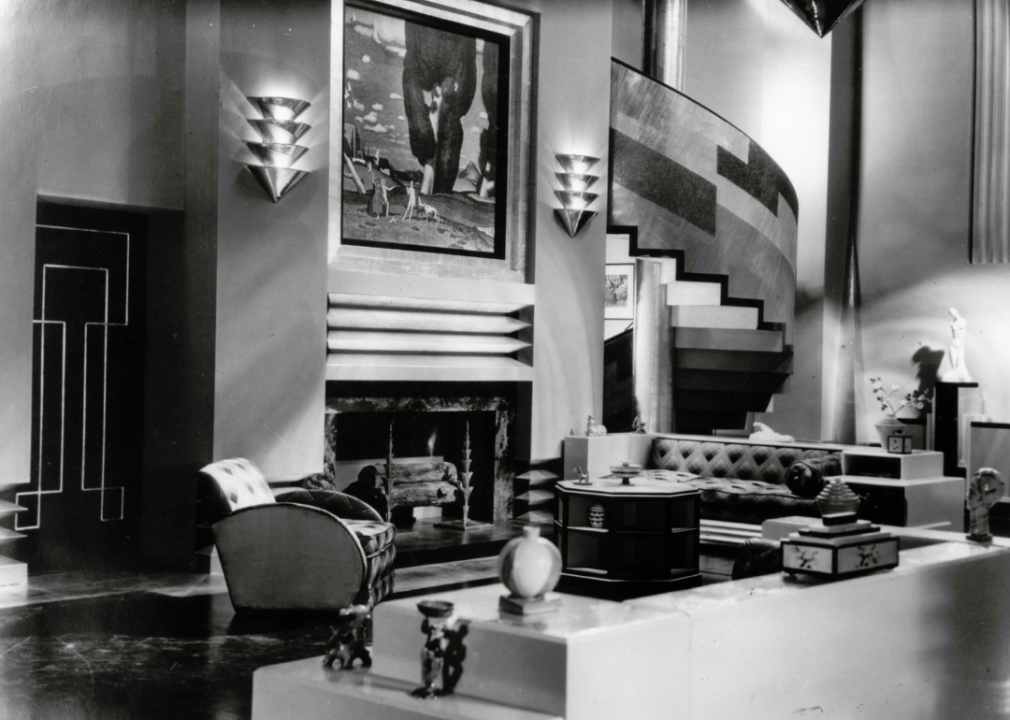
Normal Photographic Company // Getty Photos
Luxe and extra within the Twenties
There was a lot to have a good time through the Roaring ’20s: a booming economic system, ladies’s proper to vote, steamship and air journey. There was a sense that something was doable following the victory of the Allied powers in World Conflict I, and artwork deco embodied this.
Launched on the 1925 Exposition Internationale des Arts Décoratifs et Industriels Modernes in Paris, designers expressed artwork deco by luxurious upholstery and closely ornamented decor. Glamour was key. Daring patterns and stylized interpretations of pure wonders like solar rays and geometric ones like chevrons abound in every little thing from wooden inlays to chandeliers and doorways. However not everybody embraced or may afford such extravagance.
Enter German Bauhaus design, which was extra accessible with mass-produced furnishings. It noticed magnificence in simplicity, stripping furnishings all the way down to its essence in type and form. Marcel Breuer’s revolutionary Wassily Chair, designed in 1925, exemplified this: no cushioning, heavy upholstery, or wooden base—simply strips of leather-based stretched tight throughout a tubular metal body.
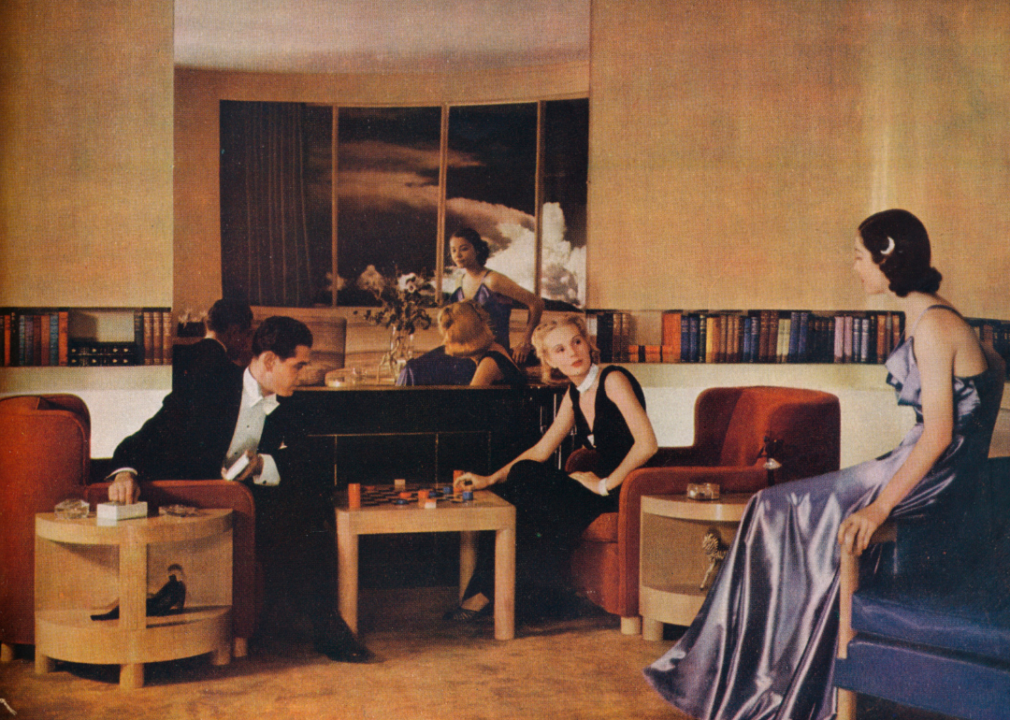
Print Collector // Getty Photos
Paring down through the Thirties
The nation had simply entered the Nice Despair, which might final by the last decade. Individuals had little, if any, disposable revenue. Fundamental requirements grew to become the precedence, mirrored within the transfer towards a extra minimalist, industrial-influenced strategy to furnishings.
Artwork deco was nonetheless in play with its geometric patterns and glossy, showy supplies equivalent to lacquer, glass, and mirrors, in addition to skyscraper-esque furnishings. (The Chrysler Constructing and Empire State Constructing each opened at the moment, in 1930 and 1931, respectively.)
Then streamline moderne arrived with the Chicago World Honest’s “A Century of Progress.” This type was a pared-down model of artwork deco and closely used the newest engineering applied sciences. Streamline moderne was characterised by lengthy, clear strains and transportation design-influenced, aerodynamic shapes equivalent to ships or bullets.
As a substitute of angled tables and home equipment, rounded edges grew to become extra prevalent, together with the usage of metal, glass, and cheaper supplies. Colours and patterns have been additionally extra muted than within the earlier decade.
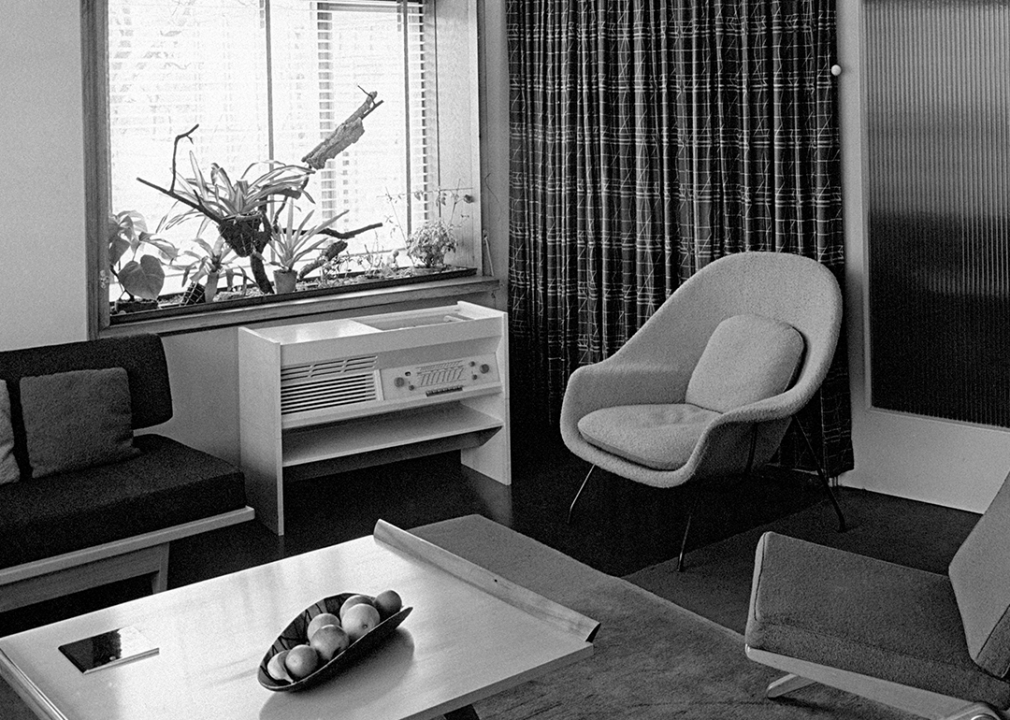
Mondadori by way of Getty Photos
Tech on the rise within the Forties
America entered World Conflict II on the finish of 1941, shifting factories’ priorities from shopper calls for to supporting the conflict effort. In the course of the conflict, expertise developed, permitting for the mass manufacturing of furnishings at extra inexpensive costs and utilizing supplies equivalent to plastic and fiberglass.
Kind, operate, and optimism have been the driving forces of probably the most widespread design kinds: modernism. Glass, steel, and wooden have been nonetheless closely used however with even much less ornamentation than within the Thirties.
Throughout this time, probably the most enduring Charles and Ray Eames lounge chair designs, the plywood LCM that includes steel legs, was produced in Los Angeles. Additionally notable within the late ’40s was the launch of the long-lasting womb chair by Eero Saarinen, an upholstered and pillow-cushioned chair that hugged the physique and sat on a steel body.
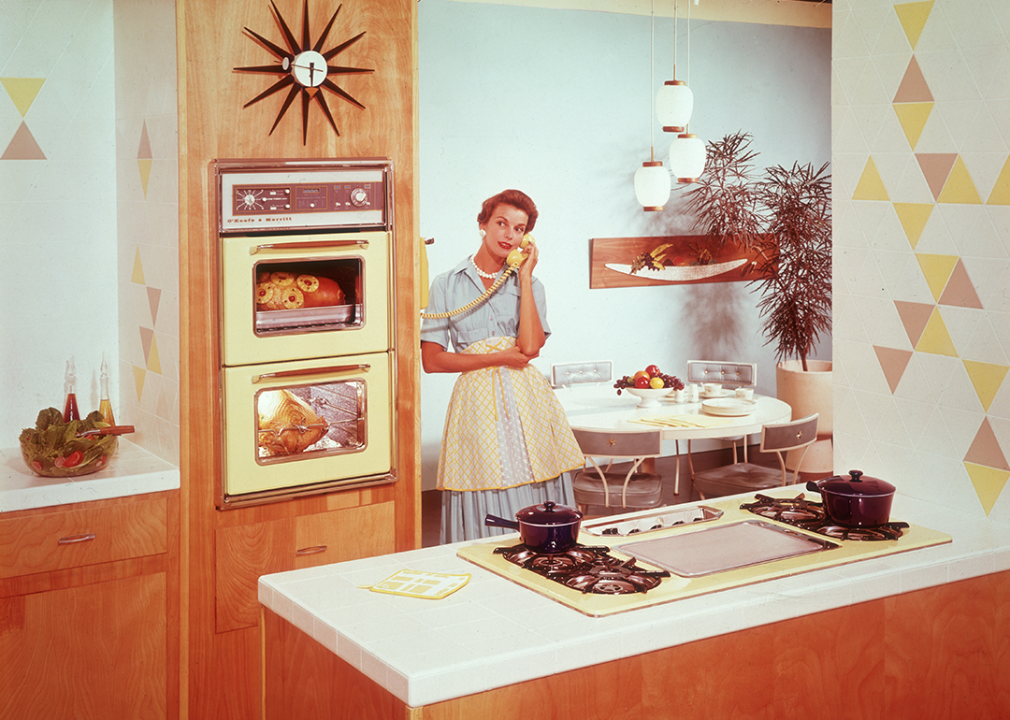
Tom Kelley/Hulton Archive // Getty Photos
Modernism in full bloom through the Nineteen Fifties
Folks had more cash to spend with the monetary prosperity that adopted WWII. The plush interiors of outdated Europe nonetheless discovered their method into upper-class Individuals’ properties: ornamental upholstered chairs, grand chandeliers, gaudy gold frames, and vintage tables worthy of royalty. However a extra up to date aesthetic began to emerge in distinction. Fewer frills, an emphasis on operate, and clear strains outlined the favored midcentury fashionable and Scandinavian kinds.
Many iconic items nonetheless in demand at present arrived, such because the Eames molded fiberglass chairs and Saarinen’s pedestal tulip fiberglass chairs and iconic eating tables. The only-story ranch house reigned by way of residential structure, with most that includes open-floor plans with eating areas bleeding into dwelling rooms versus being separated, permitting for bigger communal areas to entertain.
The pastel shade palette of the period, together with lilac and mushy pink, was calm but uplifting, with extra showy colours (dusky crimson and turquoise) additionally making a press release in properties.
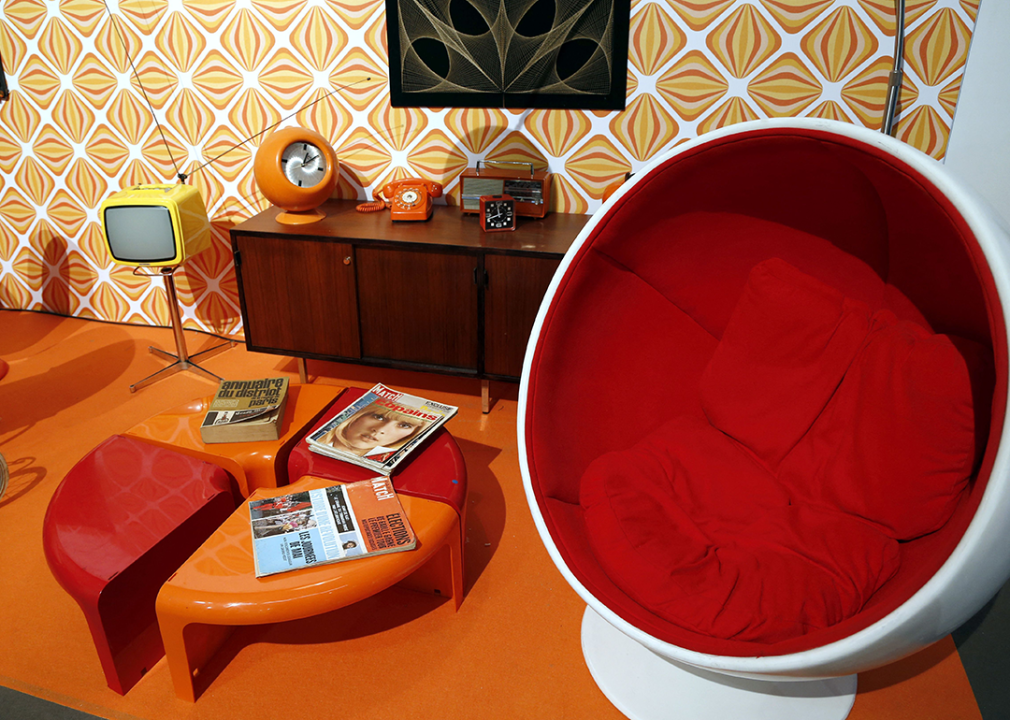
FRANCOIS GUILLOT/AFP by way of Getty Photos
Future-forward within the Sixties
A rejection of the established order embodied in counterculture, antiwar actions, and the thrill of the House Race influenced ’60s house interiors—vibrantly coloured flower-powered patterns on partitions and fabric celebrated self-expression.
Widespread leisure drug use accompanied the counterculture motion, with lava lamps and black lights (and psychedelic posters particularly designed for them) illuminating rooms and entertaining the eyes with trippy colours and shapes.
Stretching folks’s creativeness additionally got here within the type of futuristic lighting such because the rippling Splügen Braü aluminum pendant gentle and the swooping Viscontea lamp, each by the Castiglioni brothers, as Individuals sought to enterprise into worlds past Earth’s environment.
Scandinavian design additionally introduced trendy open wooden shelving models and cabinets to show brag-worthy collections and Verner Panton’s curvy, legless plastic chair into properties.
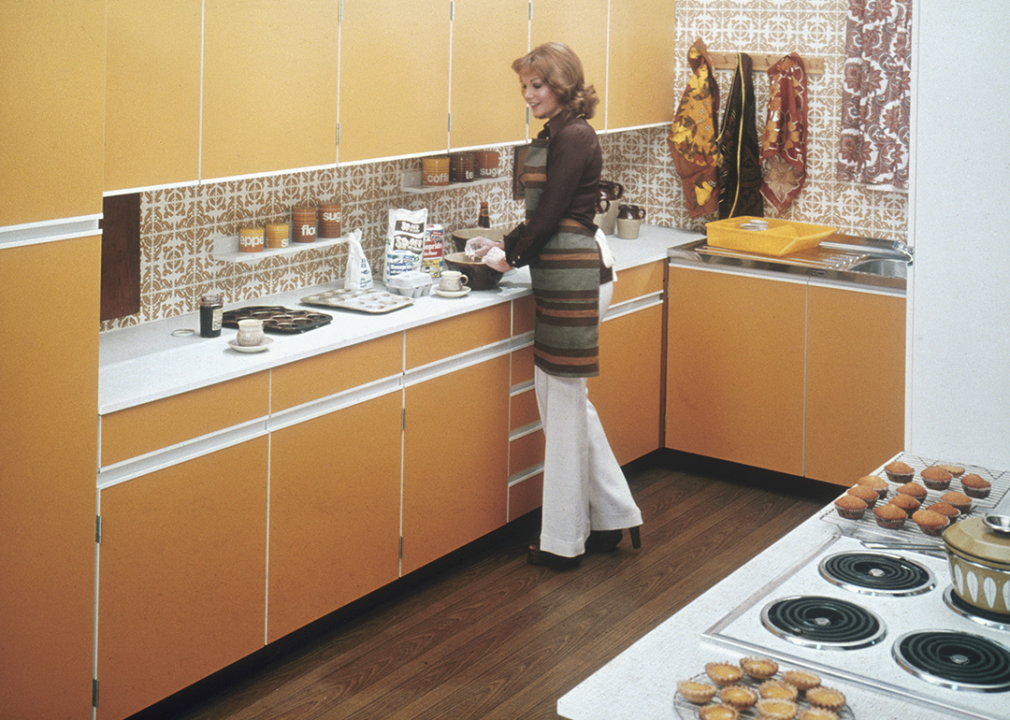
f8 Imaging/Hulton Archive // Getty Photos
Impressed by environmentalism within the Nineteen Seventies
The primary Earth Day celebrated in 1970 marked a transfer towards environmentalism, and an earthy shade palette adopted to dominate the last decade. Designers utilized rust, brown, avocado inexperienced, and mustard yellow to every little thing, together with furnishings and home equipment.
Wooden paneling, comfortable seating, and macrame galore have been a number of the options that spoke to the informal, laid-back interiors of the ’70s. With sunken dwelling rooms, shaggy carpet, and furnishings you possibly can sink into, like bean-bag-like seating, waterbeds, and low-back couches, the theme was leisure.
Dwelling design additionally confirmed much less restraint, favoring open plans and pure supplies, like wooden, leather-based, and rattan, over metal and handcrafted objects over machine-made.
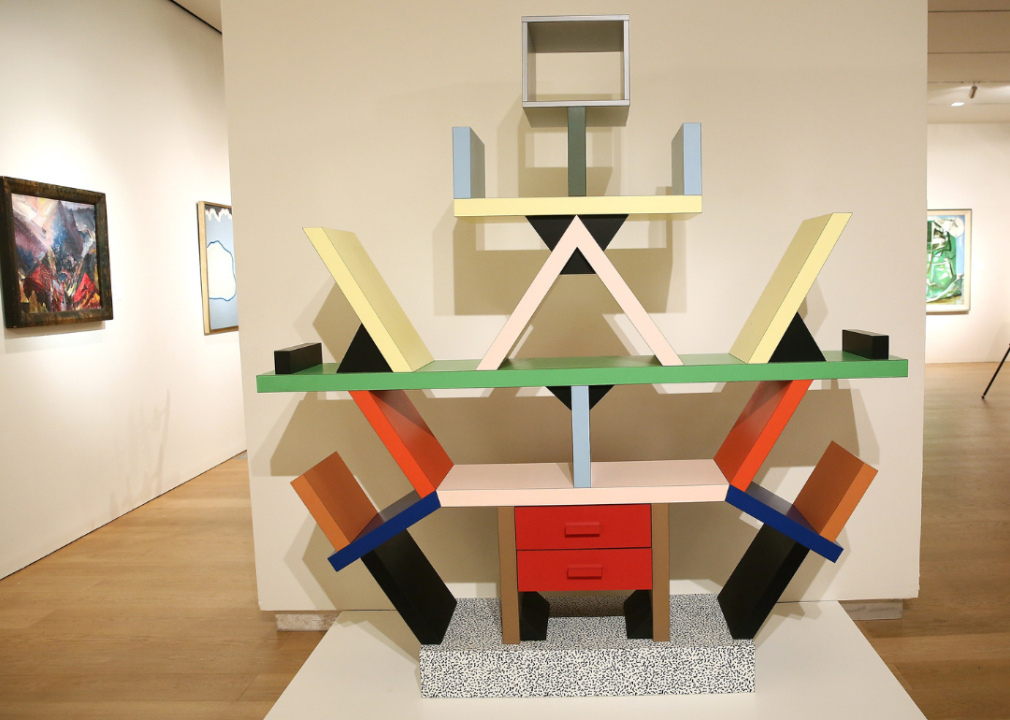
Monica Schipper/WireImage // Getty Photos
Postmodern social gathering instances within the Nineteen Eighties
By the mid-Nineteen Eighties, practically each American family had a TV—MTV was on 24 hours a day—and, on common, folks have been glued to their units for 7 hours a day. The last decade’s hottest closely influenced how Individuals furnished their properties.
Many took inspiration from their beloved characters’ house decor, such because the neon shade palette and glass-block partitions of “Miami Vice,” the luxurious, drape-heavy rooms and plush seating of “Dallas” and “Dynasty,” and the frill and tropical-inspired furnishings of the “Golden Ladies” (bear in mind Blanche’s banana leaf wallpaper and bedspread?).
For the extra rebellious set, a bunch of Italian designers and designers, the Memphis Group, launched the world to their postmodern eponymous design type of vibrant colours, contrasting palettes, edgy patterns, and asymmetrical furnishings items—a commingling of artwork deco and pop artwork influences, which might in flip form graphic, trend, and product design. Suppose wild geometric and confetti prints, the MTV brand, and Swatch watches.
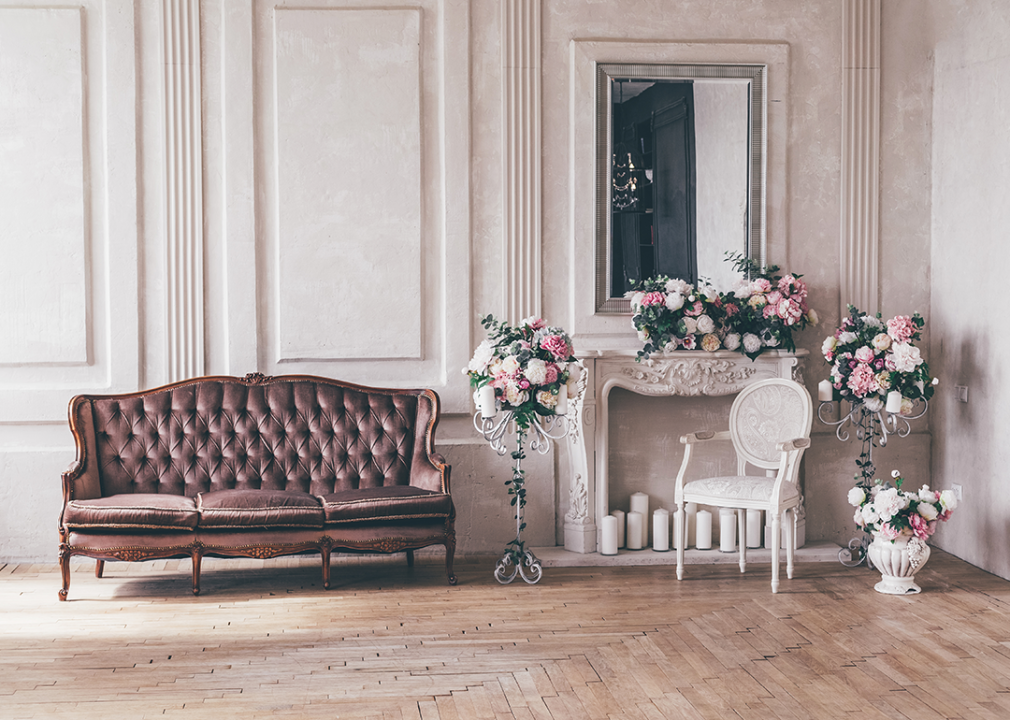
Anntuan // Shutterstock
Success within the Nineteen Nineties
Progress and prosperity have been felt throughout the nation: The Chilly Conflict ended, American family incomes rose, and violent crime was down, amongst different constructive developments. This temper inspired folks to experiment, play, and present individualism of their properties.
Sponge-painted and decal-covered partitions, floral and gingham decor, shabby stylish interiors stuffed with frilly materials and worn items—something went through the period. Upcycled items have been in vogue with the sustainability motion gaining floor, whereas others embraced maximalist tendencies with clashing, colorful-patterned furnishings.
Influenced by a NASA research that recommended houseplants may assist filter air pollution, householders added greenery to their interiors, hanging vegetation from partitions and inserting them on cabinets with vines trailing in all instructions,
Throughout this time of relative peace, folks regarded to increase that sense of calm or constructive power to their speedy environment—feng shui rules and zen design decided the movement and placement of things within the house.
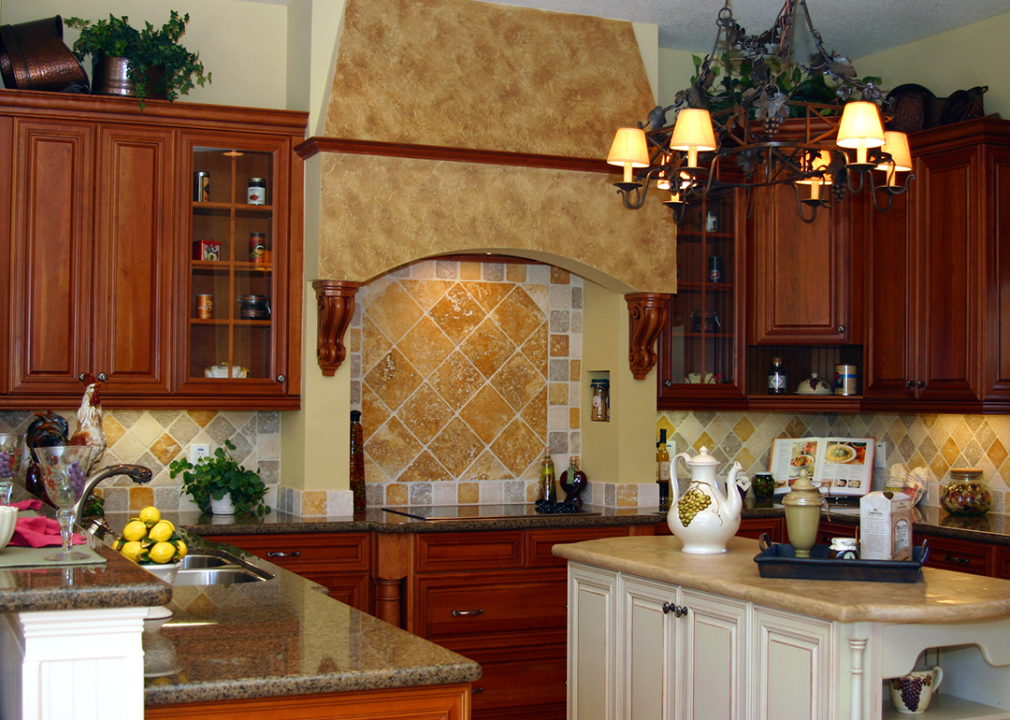
Michelle Marsan // Shutterstock
Nicely-being through the 2000s
Simply because the nervousness over the arrival of Y2K abated, the nation suffered the deadliest terrorist assault in U.S. historical past on 9/11. Architects and concrete designers responded with designs of buildings and public areas to make folks really feel safer and comfy. Likewise, Individuals sought security and luxury of their properties following the assaults.
A inexperienced dwelling motion inspired utilizing pure (and repurposed) supplies and vegetation as folks began reflecting extra on their impression on Mom Earth.
McMansion dwellers discovered heat and Previous World appeal within the Tuscan design aesthetic, significantly within the kitchen, emphasizing earth tones, ornamental wooden cabinetry, and different ornamentation.
Safety fell by the wayside, nonetheless, when the Nice Recession hit. The period noticed gorgeous job losses—15 million-plus folks have been unemployed by decade’s finish—and foreclosures, forcing thousands and thousands to lose their properties.
Flaunting one’s wealth, whether or not in a single’s garments or the inside design of 1’s house, was frowned upon, preserving the minimalist aesthetic alive. Others opted for secondhand furnishings versus buying new objects to refresh their dwelling areas.
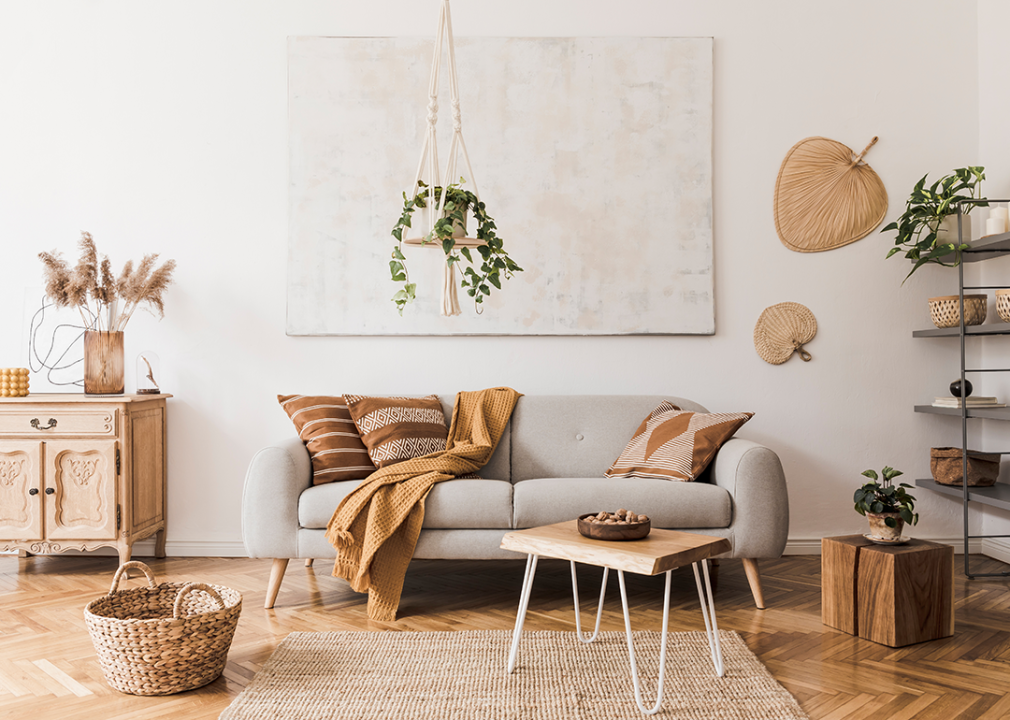
Followtheflow // Shutterstock
DIY within the 2010s
America was nonetheless feeling the results of the recession into the 2010s, so budgets have been tight. However there was additionally pleasure over the design prospects with the rise of apps like Pinterest and Instagram, which offer an limitless provide of visible inspiration that matches each funds.
Even in case you couldn’t afford a high-end merchandise, retailers supplied cheap knockoffs (of midcentury fashionable furnishings, as an example) or DIY options to reimagine current items featured in blogs, YouTube movies, and residential design reveals.
Being extra linked than ever globally introduced cultural objects from overseas—Moroccan poufs, carved wooden cabinetry and tables from India, and African patterned textiles—to brighten properties greater than ever. Extra sustainable practices in furnishings manufacturing would see an increase in reclaimed wooden use and lasting items versus disposable ones.
“Fixer Higher” hosts Chip and Joanna Gaines helped popularize fashionable farmhouse options like shiplap and worn wooden furnishings, whereas maximalists loved layering completely different kinds and objects. Decorators put collectively flea-market finds with new big-box retailer objects. Whether or not one needed a boho- or industrial loft-style look, there was no scarcity of choices.
Story modifying by Carren Jao. Copy modifying by Kristen Wegrzyn.
This story initially appeared on Dwelling Areas and was produced and
distributed in partnership with Stacker Studio.
Written by Teena Apeles
[ad_2]